The Lyrids are particles of comet C/1861 G1 Thatcher which has an orbit of about 415 years. Outbursts of the Lyrids have occurred in intervals of about 60 years with the years 1803, 1862, 1922, and 1982 producing notable displays. The next strong outburst should occur near 2042. Every year the Earth passes through the particles of this comet from April 14-30. Particle density in space is very sparse away from the April 22nd maximum therefore are low away from this date. On the night of April 21/22 the Earth passes closest to the core of the comet’s orbit and rates climb to 15-20 Lyrids per hour, depending on your location. This year the moon will be at it’s first quarter phase meaning that it will be half-illuminated and will set near 02:00 local summer time as seen from mid-northern latitudes. Therefore it would be best to wait until the moon has set before commencing observations as moonlight will obscure fainter meteors.
On the night of maximum activity the Lyrid radiant will lie in eastern Hercules, not far from the brilliant white star known as Vega (alpha Lyrae). This area of the sky will lie approximately half-way up in the sky in the northeast at 02:00 LST (local summer time). By the time dawn breaks it will lie nearly overhead. That last hour before dawn will be the best time to see Lyrid activity as the radiant will lie highest above the horizon in a dark sky.
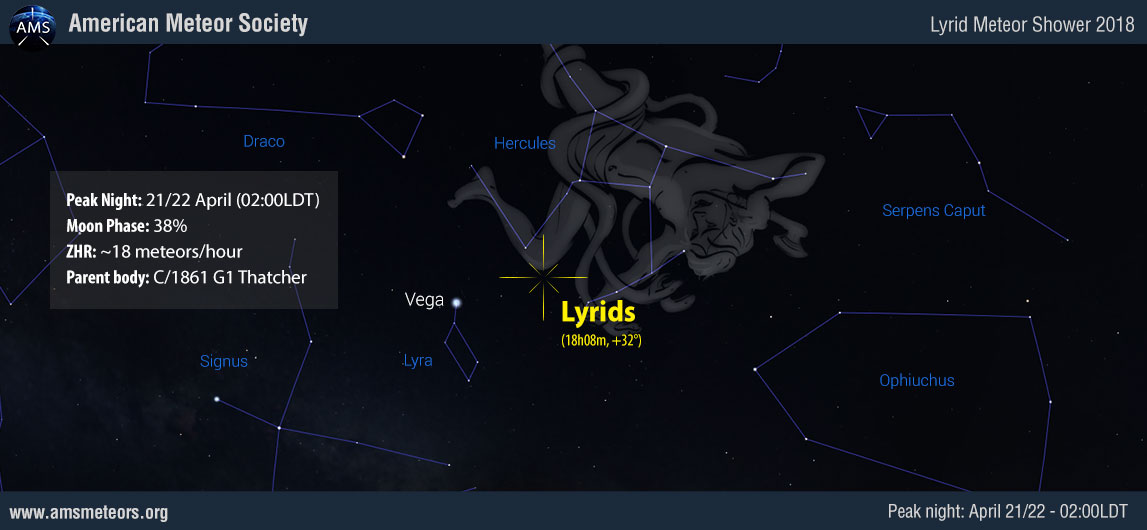
The Lyrids are usually faint meteors possessing average speeds. Lyrid fireballs are uncommon but do occur on occasion. The graphs below show Lyrid and sporadic activity from the last 11 years. Each dot represents a single hourly rate reported by a single observer, corrected for effective time, obstructions, sky conditions, and zenith angle. Reported sporadic rates are also plotted for reference (also corrected for effective time, obstructions, and sky conditions). Each plot is in terms of Solar Longitude, not date, allowing direct comparison between years. The expected maximum for the Lyrids each year lies at solar longitude 32.3 The graphs are courtesy of James Richardson using data from the International Meteor Organization (IMO).


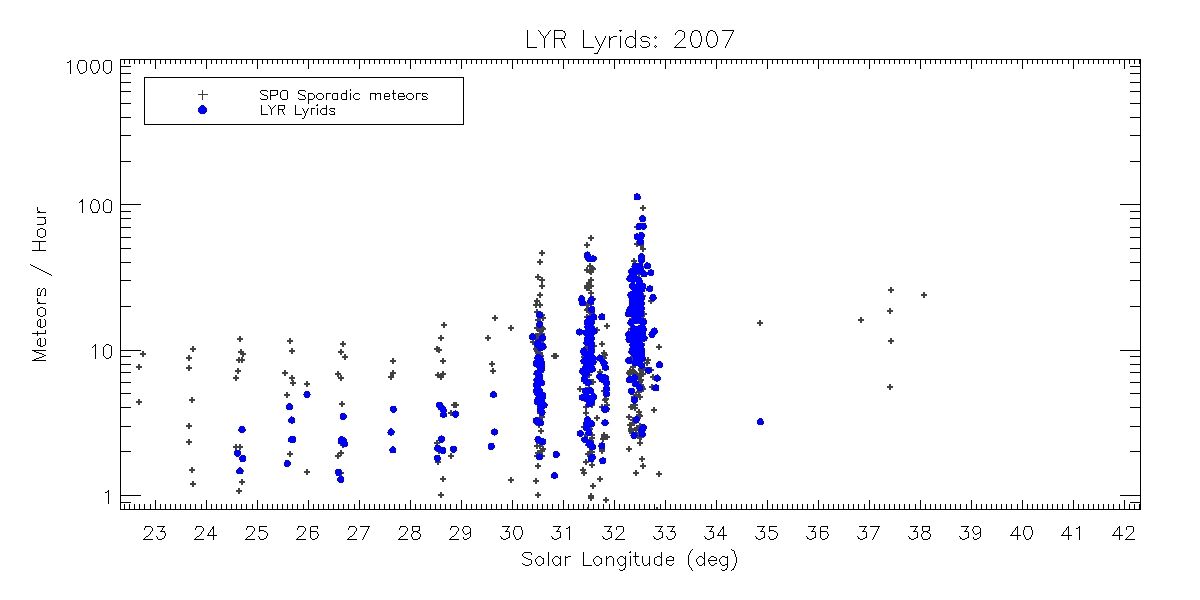
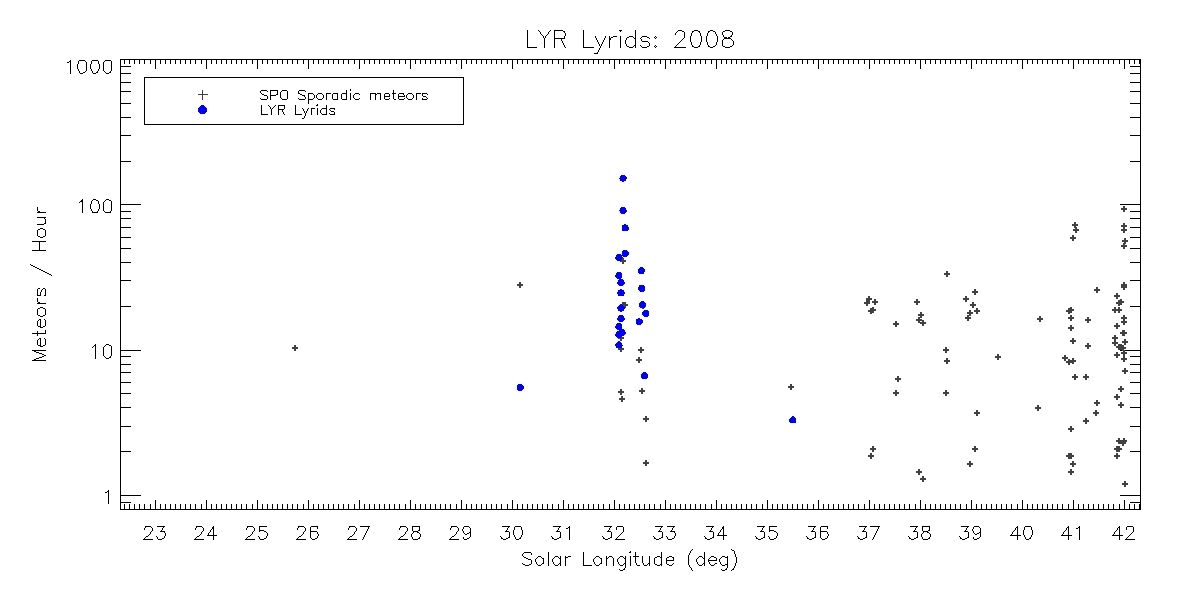
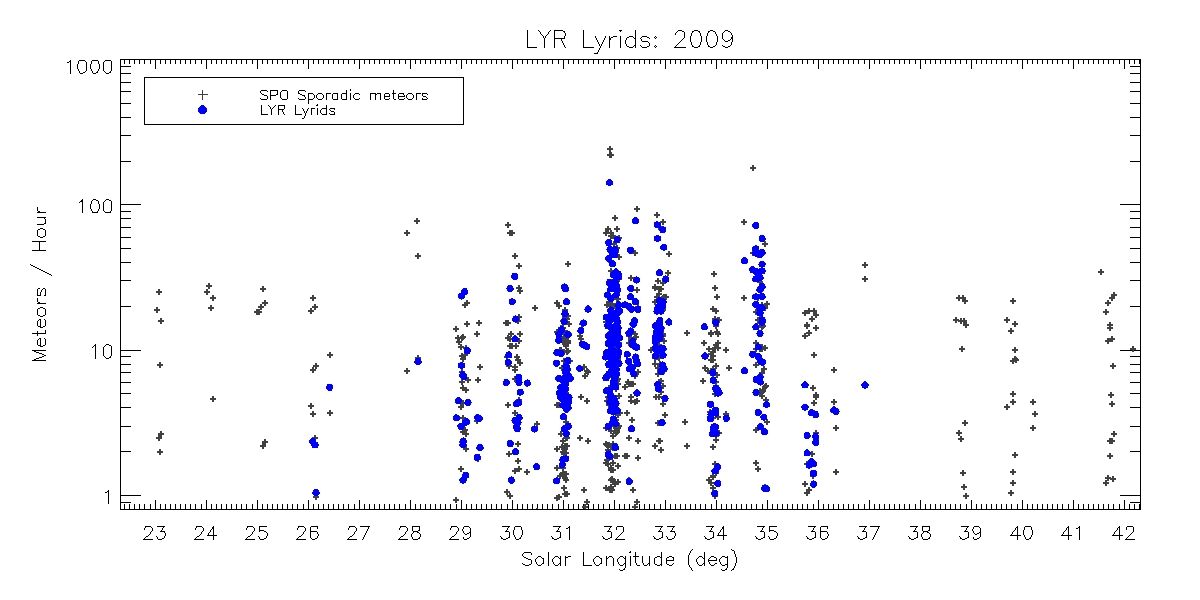
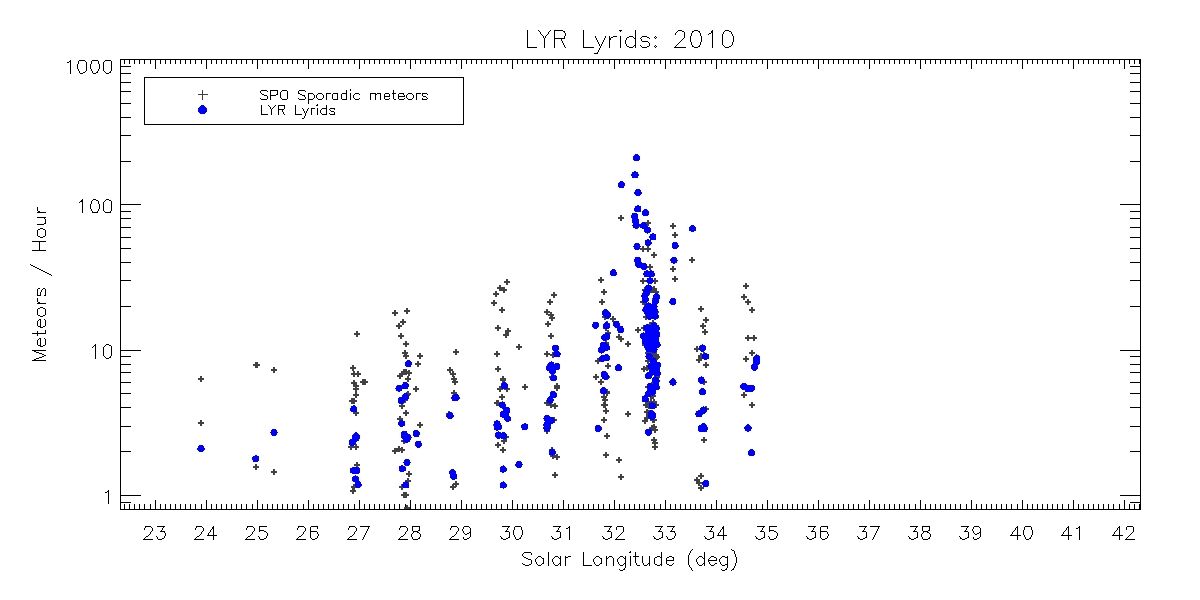
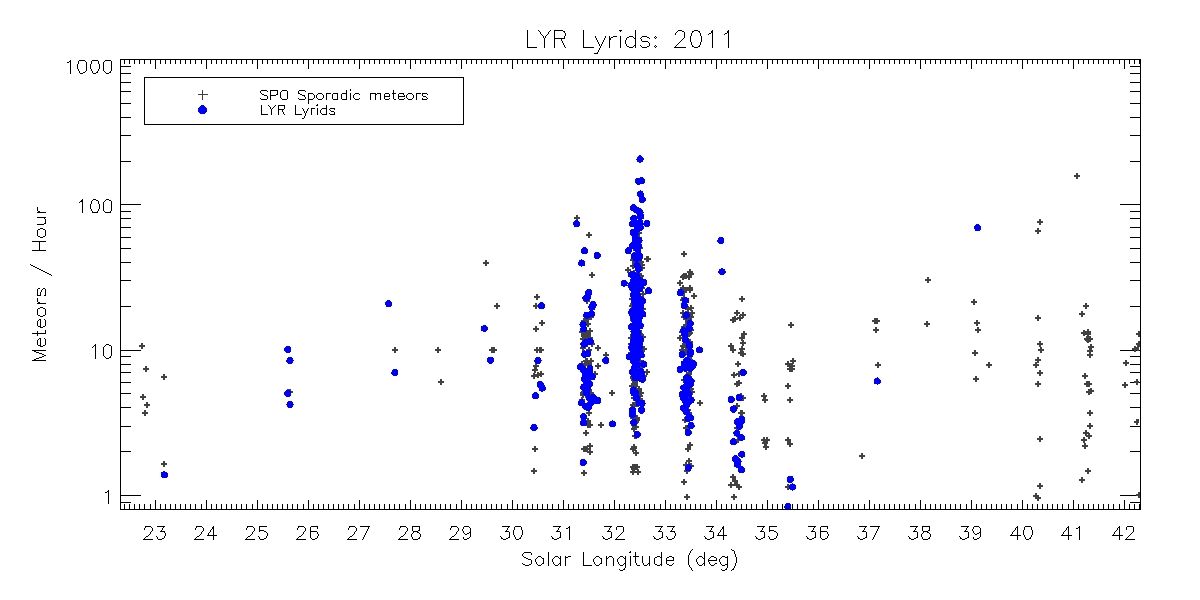
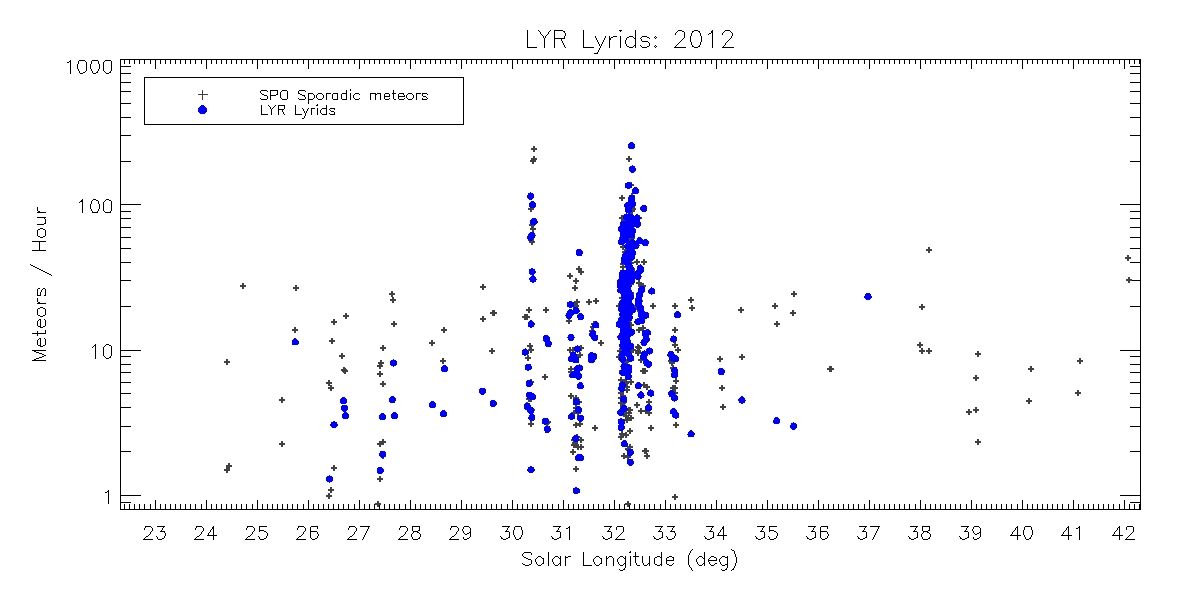
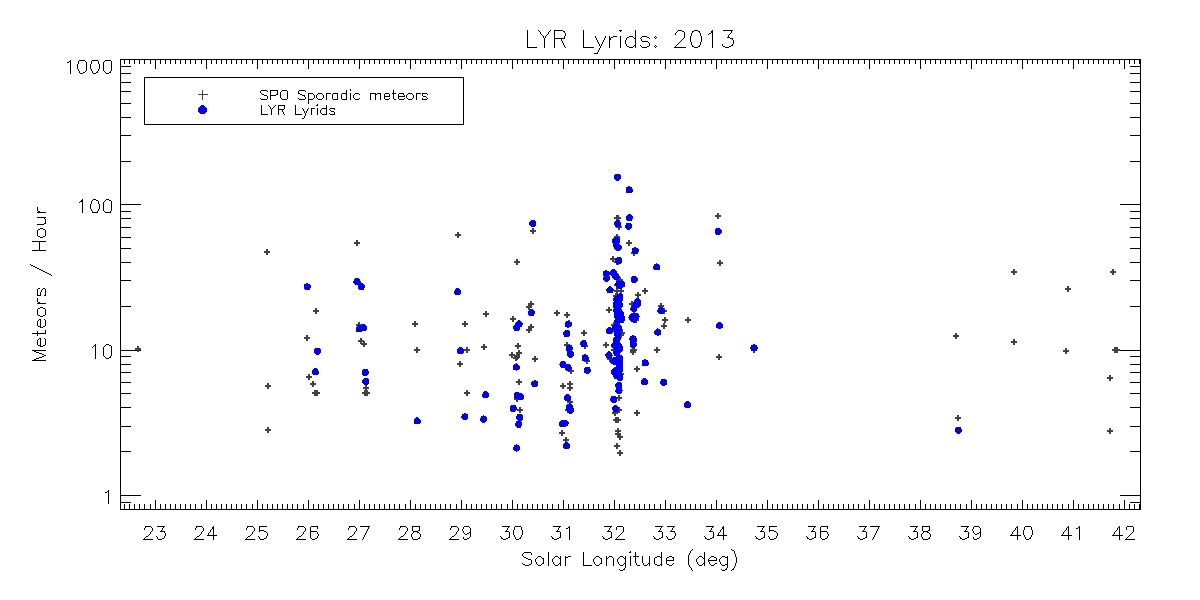
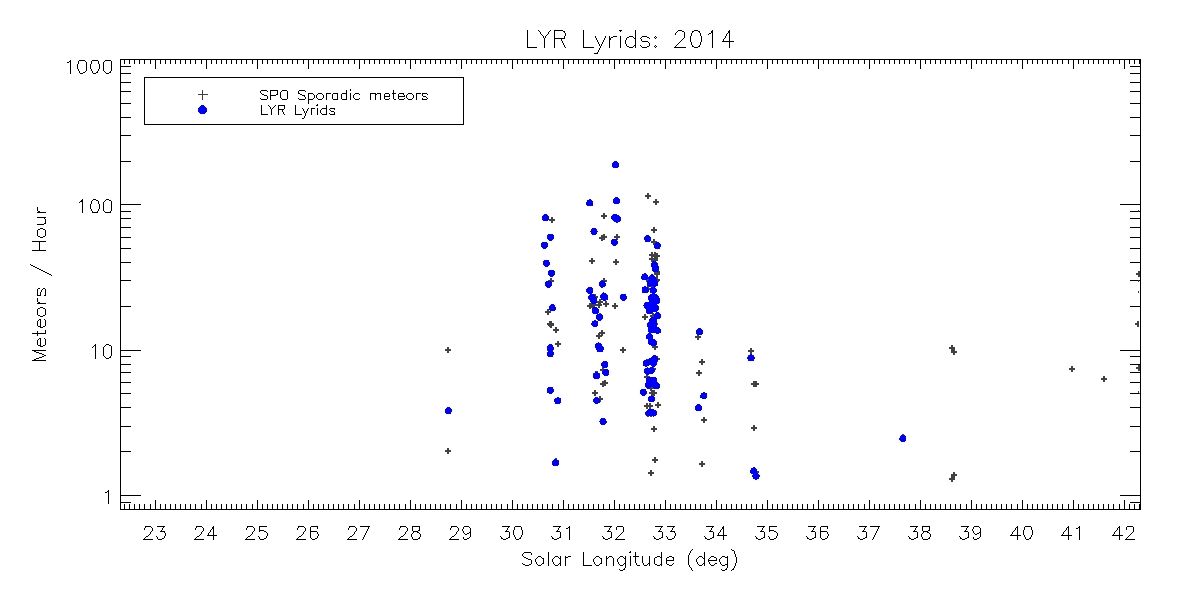
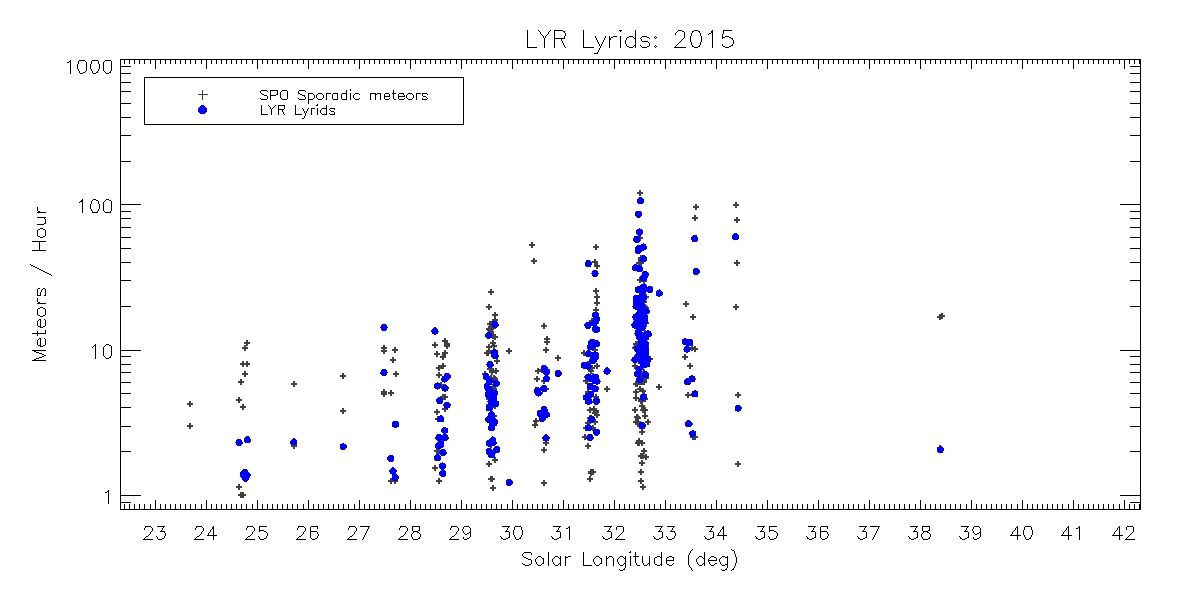
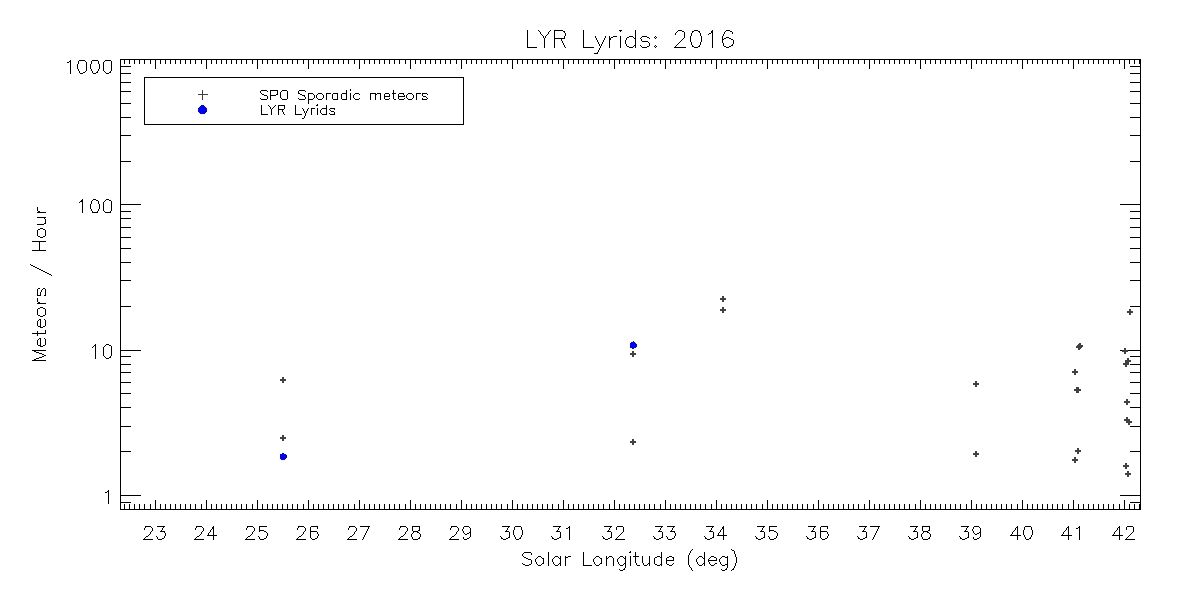
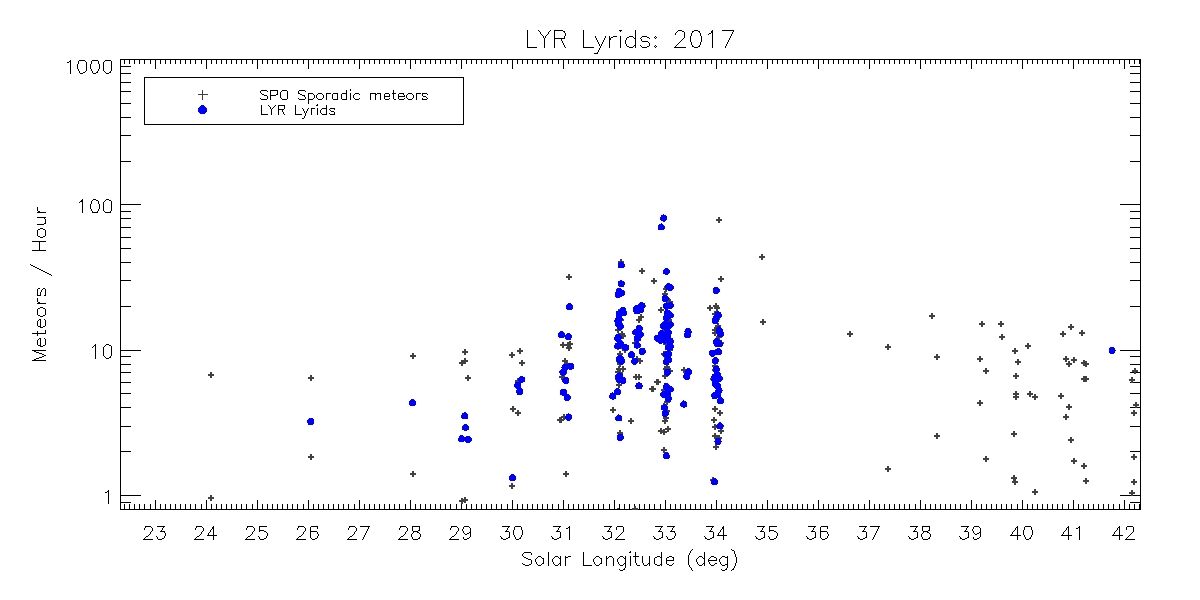


 You saw something bright and fast? Like a huge shooting star? Report it: it may be a fireball.
You saw something bright and fast? Like a huge shooting star? Report it: it may be a fireball.  You counted meteors last night? Share your results with us!
You counted meteors last night? Share your results with us!  You took a photo of a meteor or fireball? You have a screenshot of your cam? Share it with us!
You took a photo of a meteor or fireball? You have a screenshot of your cam? Share it with us!  You caught a meteor or fireball on video? Share your video with us!
You caught a meteor or fireball on video? Share your video with us!
5 comments
I saw 16 Lyrids in two hours this morning from 1:04 AM to 3;04 AM EDT from Mathias,
West Virginia with a limiting magnitude of around 6.4 magnitude. However, the average
Lyrid was a rather faint 3.6 magnitude. As tomorrow morning is the peak on Earth Day,
the rates and average brightness may be a lot better. Unfortunately, our forecast calls for
mostly clouds then. Still not a bad show this morning.